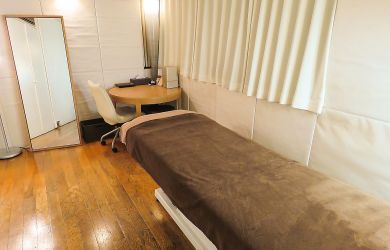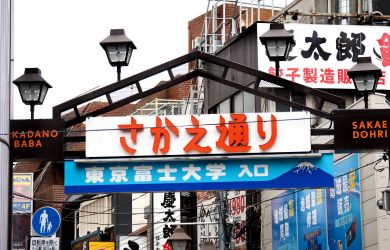
Originally published on metropolis.co.jp on November 2012


When we think about great city hotels they tend to be iconic destinations in their own right. The Ritz in Paris, the Plaza in New York, Raffles in Singapore. They all have something in common: they were built as, and remain, single-purpose buildings, built at a time when travel took weeks, not half a day. Today, in a city like Tokyo, where land values and population density are so high, the kind of iconic signature image of a hotel—a very large dedicated building—is not practical.
Tokyo experienced an influx of premium five-star international chains in the years before and just after the Lehman shock. Since then, combined with the bigger shock of March 11 of last year, many of these hotels have lost their international appeal and have pivoted to the domestic market. One of their hallmarks here in Tokyo has been the necessity of creating iconic footprints with mixed use buildings.
At first, buildings with mixed use sound less than promising, but these are properties where the hotels work very closely with developers to ensure that the parts of the building the hotel occupies are distinctive, comfortable, and often dramatic. And with the focus now on bringing in domestic guests, Metropolis presents some top choices for a world-class vacation without even leaving the city.
The Mandarin Oriental, Tokyo in Nihonbashi (opened 2005) and the Shangri-La (2009) at Yaesu, the northern end of Tokyo station, illustrate the point most clearly. Entering the Mandarin from street level, you walk past the office elevators to a dedicated bank carrying guests directly to the reception and lobby on the 38th floor. The check-in process is quick and efficient, and sitting in the lobby lounge affords a real look—not only at the city below, but also out past the city. On very clear days they say that Mt. Tsukuba, some 80km north, is visible.

Rooms are below the lobby, on the 30th floor, yet still 100m above the street. Soundproofing means street noise, even ambient hotel noise, is kept discretely from your ears. The large 50m2 rooms are well appointed. Each has simple but carefully chosen artwork, and the beds are large and comfortable. The oval bathtub is almost big enough to float in (particularly with the bath salts provided) and can make you feel a million miles away. I was not surprised to hear from one staffer that on the weekend, when couples come, about half just stay in and order room service.
At the Shangri-La Hotel, Tokyo, the reception and lobby are on the 28th floor, as are the two hotel restaurants (one Japanese and one award-winning Italian that serves Tuscan adaptations) while the rooms are above. The hotel’s lobby, restaurants and corridors serve as showpieces for an extensive art collection, a portion of which rotates. Rooms here are also at least 50m2 and include a large deep bath open to the bedroom by controlled blinds or closed for privacy. A wonderful touch is an L-shaped couch close to the window where you can sit and watch the magnificent city you just escaped below.
Shangri-La General Manager Jens Moesker also noted that weekend guests tend to stay in their rooms or dine in the hotel restaurants. “Many are people who live in Tokyo or quite close to the city, so it’s more a ‘staycation’ for them.”
Spa treatments at the hotel’s Chi, The Spa are another feature open to guests and are sometimes booked by the local business community as well. They must be a tough crowd. A one-hour-plus spa treatment will energize and exhaust. Heading into an executive meeting afterwards would have been challenging.
At almost the opposite end of Yaesu is the Four Seasons Hotel Tokyo at Marunouchi. The smallest of the international five-stars with just 57 rooms, this hotel breaks the mold in many ways. It’s also connected to an office building but functions as a set off, rising just seven stories above Tokyo station. There is only one restaurant, which serves dinner, and one of the most enticing breakfasts in Tokyo. The Four Seasons also stands out by being intentional family friendly. Tokyo is known for many things, but child-friendly facilities are not often among them.

Upon checking into our rooms, awaiting our children were special cookies decorated with their names, personalized booklets, and a note from the general manager. Shortly after, the staff brought an electric train set for them to assemble, including shinkansen and local trains—the same ones they could see from the floor-to-ceiling glass windows that overlook Tokyo station. Between that, and the Nintendo, the kids were entranced. The rooms are large, and the bathrooms ideal for families, with a tub completely separate from a glass stall shower and other facilities. Anyone who has traveled with smaller children knows that the small touches can be the decisive factor for their feeling comfortable and welcome, and the difference between a relaxing getaway or a vacation in hell.
General Manager Daniel Simon explained that the Four Seasons has, over several years, widened its focus away from merely high-end business travelers. “We are a smaller property but we have a young and enthusiastic staff, and we’re located in an area where there are a lot of attractions just outside the door.” That includes the rebuilt areas and inner lairs of Tokyo station. In fact, in bad weather, the staff can lead you through passages to what feels like a secret Thai restaurant under the hotel. Tokyo Ramen Street and other venues in the warren-like passages of the gigantic station are also in easy walking distance.
Unlike the previous hotels, the Grand Hyatt Tokyo is almost its own separate city. Located in Roppongi Hills, it includes enough bars, boutiques, and restaurants to take up more than a weekend—plus the Mori Art Gallery, Toho Cinemas, and more. Guests who do not want to leave the hotel can visit their sixth-floor Edo-style sushi restaurant, The Oak Door steakhouse, a teppanyaki restaurant or one of eight other hotel-only restaurants.
The Grand Hyatt Tokyo is the only one of the hotels that really qualifies as a “destination,” as far as iconic hotels of the world go. It’s a busy place in a very busy district and yet, once above the city, it’s quiet and almost serene. A delicate balancing act to pull off.
Of the four, the Shangri-La and the Mandarin stand out for what they can offer couples looking to “get away” from the city. While the Grand Hyatt Tokyo stands out as a destination unto itself, the Four Seasons wins hands down for families with smaller children.
And the best thing with all of them? No jet lag.





